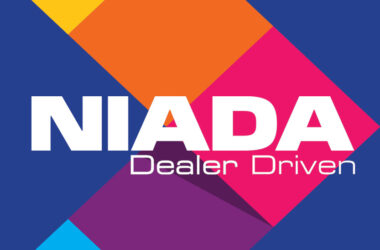Looking to Improve Your Dealership’s Operations in a Changing World? It Starts at the Top
If I am going to expect better results from my employees and my dealership, I must become a better manager.
Those words have been quoted thousands of times in meetings and training materials over the years, but they have never been more true than they are today.
In a climate of declining inventory availability, skyrocketing prices at auctions across the country and endless advances in technology, we have to become students of the business just to keep up, let alone to improve our operations.
So given that situation, you might be asking, “Where can I turn to get relevant, reliable and accurate information that could be the basis for training and developing my employees, as well as for myself?”
Many dealers try to go it alone and often, once the process has started, it falls by the wayside because training and development of employees takes a lot of time and even more effort.
Given the fact so many dealers and managers play multiple roles in a store, that task is often completely overlooked and neglected.
Another headwind for training efforts is that the pandemic and the lack of new vehicle inventory for sale has made it easier than ever to sell our vehicles and maximize gross profit on those sales.
As a result, we’ve gotten “fat and happy,” and that creates a lasting impression on our employees.
If you really think about how the pandemic and the new vehicle shortage has affected our daily routines – and even our road to the sale – the results have become staggering.
Not many months ago, because of the pandemic and possible exposure to customers with COVID, we rightly discontinued the age-old practice of giving thorough demonstration drives.
But because we’ve still been able to sell vehicles and are generating tremendous grosses, we’ve been lulled into thinking we don’t need to do the demonstration drive anymore.
So any salesperson new to the business might not even be aware that a demonstration drive is the most powerful tool we have to sell a vehicle. And since we’re having a great year sales-wise, we as managers are overlooking the advantages of the professional demonstration drive.
A word to the wise: If you don’t understand how important that step is in the road to the sale, go back to car sales school.
Many well documented case studies have proven many times that a sales professional standing and giving a well-crafted presentation rather than sitting behind a desk will close as much as 43 percent more business, and at much higher prices.
So how can you get your people back on track with that important aspect in the road to the sale, and how do you get the ball rolling?
For starters, you can contact NIADA dealer development.
The dealer development team can help you through virtual training courses or in person at your store for onsite consulting. We can train your employees for you or we can train your trainers to conduct the necessary meetings, complete with all training materials already available.
If you’re a 20 Group member, you can get special pricing for on-site consulting, whether we train your salespeople or your trainer.
If you want to go it on your own and have the extra time or manpower to execute the training, I would suggest you start with your reconditioning process and any quality guarantees you offer on the vehicles you’ve reconditioned.
Your recon process, the inspection and the subsequent repairs made should be intertwined into your sales philosophy, sales training and sales process. They should also be the foundation for your owner retention and customer-handling processes.
Your reconditioning philosophy ultimately will shape the culture within the store and have a lasting impact on your employees, as well as your store’s reputation within your community.
Standards should be set for replacement, repair and “let it slide” decisions.
Those standards should become common knowledge within your operation and should be used to train salespeople and to close deals and communicate with customers.
Examples of Items With Standards for Decisioning:
- Oil and filter changes.
- Tire tread depth before replacing.
- Brake pad/shoe thickness before replacing.
- Turning rotors with each brake job.
- Replacing rotors.
- Acceptable size for windshield pecks/stars.
- Broken or cracked tail lights or turning lights replacement.
- Replacement of air filters.
- Handling of factory recalls both pre- and post-sale.
Something else you can do for additional reinforcement of the reconditioning story is produce some point of purchase leaflets or brochures that serve as a reminder to your salespeople to share the reconditioning process and associated information.
Posters or wall hangings also are great reminders for the salespeople and sales managers to actively sell the recon story.
The posters or wall hangings also double as a way for salespeople to let sales management know they have a customer who wants to leave the store.
In that situation, the salesperson simply asks the customer to step over to the poster so the salesperson can point out and remind the customer that while others might tell the customer about their inspection process, “we put ours in writing and on display because we feel so strongly about it.”
That immediately becomes a signal and an opportunity for the sales manager to intercede with a “soft” T.O.
Not only is that a great T.O. mechanism, it allows the sales manager to confirm that his salesperson did, in fact, cover the recon story and inspection process by immediately launching into the recon story and inspection process with the exact word track the salesperson was supposed to use.
How? Because by doing that, the customer is likely to tell the sales manager that the salesperson has already covered the items. Or the sales manager can ask for confirmation that it was already covered.
Guess what? If the salesperson has not covered that – assuming you have made that activity a part of your sales process – it’s time for a private discussion with that salesperson.
A Written Inspection Process That’s Monitored for Accuracy is Critical to Reconditioning Because:
- It can be used as a sales or sales training tool.
- It can be used to identify evidence of skimping on recommended repairs by sales managers.
- It can be used as a tool to identify signs of technicians taking shortcuts on inspections.
- It can be used to determine whether a tech needs training with certain repairs.
- It can be used as a tool for monitoring trends or patterns of “smoking” tickets.
- It can be used to create more credibility in the eyes of a lender
- It can help with extended service agreement claims.
There’s also another opportunity for dealers to maximize the gross profit generated on each deal.
The finance control, executed properly, will generate more gross per deal without selling a single additional unit.
We must maximize finance penetration and all products sold in finance by observing the 300 percent rule.
The 300 percent rule is simple, but it’s difficult to execute. It simply means we should present 100 percent of our products to 100 percent of our customers 100 percent of the time.
Following that simple process will increase the F&I income per unit sold.
All too often in retail stores, our managers and salespeople allow customers to leave without discussing the possibility of financing the vehicle through the store. If you’re not controlling 70 percent-plus of the financing, you’re leaving money on the table.
Another major area that has slipped from our grasp since COVID-19 hit and the lack of new vehicle inventory became an issue is the need to fully recon a unit cosmetically.
Customers recently have shown a propensity to accept vehicles with unreconditioned cosmetic blemishes. That’s due to the severe lack of vehicle inventory for customers to choose from and the very real practical problem of, if the customer does not accept a vehicle in that condition, it will be sold to another customer before the cosmetics can be done.
We’re going to need to re-learn the art of cosmetic reconditioning.
That has always been one aspect of used car merchandising independent dealers have excelled in. So we need to return to normal as the industry begins to return to its normal state.
We will not be able to continue to be fat and happy for long.
In addition, we need to create the proper on-lot maintenance routines for our stores to allow for the fastest turn times possible.
If we’re not turning our inventory as fast as we should, there are several things we can do to combat that. Remember, inventory turn is the most important thing we can do to make our stores as profitable as they should be.
How Can We Do That?
- Develop the “right” model inventory.
- Tighten up the retail selection process.
- Price aggressively from Day 1.
- Track SRPs and VDPs with a vengeance.
- Track recon down time to front line.
- Pre-display check list as quality control.
- 15-16-day inventory check.
- 29-30-day inventory check.
- 44-45-day inventory check.
- Create constant on-lot maintenance.
Article from Used Car Dealer Magazine, January 2022 issue. Read more: usedcardealermagazine.com.
Ed Curry is a senior 20 Groups moderator and consultant. To find out what resources are available to help your dealership with its training needs, contact the NIADA dealer development department at niada.com/dealer-development.









